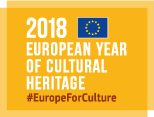Heritamus
Challenge: WHY the innovation has been developed? What problem is addressed and why has not been not solved before?
Currently, all the established heritage management databases and tools are designed for a hierarchical, atomistic and linear approach. Each item is linearly associated with others without further specifications, and museum “assets” and cultural “knowledge” remains little articulated. Beyond that, data curation has been left exclusively in the hands of heritage professionals, thereby attributing the community of practitioners with the role of consultants. All this reinforces the institution of “master narratives” produced by “prestigious actors”, erasing controversies. So, it is urgent to give “voice” to the practitioners, in order to picture, at a finer grain, how actors safeguard “old” practices and, at the same time, innovate (heritage as “living practice”). Their knowledge is much more dynamic, non-linear and complex than usually depicted on conventional heritage narratives.
Solution: WHAT the solution is about? HOW it goes beyond the state of the art?
HeritaMus is a technical resource for organizing, structuring, and retrieving historical and ethnographic data on heritage (tangible and intangible), contributing to overcome the asymmetrical representation of knowledge by bringing practitioners into the core of the research process. Intuitive and user-friendly, with a quick learning curve, the tool is centered on the idea that any item (that we call “nodes”) is defined by its relations with other “nodes”. The community and its knowledge can thus be traced by a network of dynamically connected “nodes”. The registered user simply has to identify the items that he/she recognizes as their heritage (tangible and intangible) and wishes to input in the graph. HeritaMus is the only on-line, easy to use, free tool for community curation of data and participatory graph database that allows the input of user data and big datasets.
End-users and examples of uses: WHO will beneficiate/ is beneficiating from the solution? WHERE and HOW the solution has been adopted? How will impact people or end-users? Add as more as possible examples of market and society uptakes
HeritaMus has been adopted by the community of practitioners, stakeholders, researchers, heritage professionals (archivists, museologists, curators, a.o.), and laypersons. It is being used by the fado community and by the project’s Associated Partner Museu do Fado. It will be adopted by the Flamenco community through the Associated Partner Centro Andaluz de Documentación del Flamenco. Other future uses are being discussed to promote, but also to test its versatility, on other contexts and purposes. Designed for musical practices, it provides an easy way to trace authorship, musical performance and creation, providing better and more detailed information for the community on their own tradition. Since its design is not culturally or object specific, it can be adopted on any other subject. As for traditional musical practices, with a corpus of melodies that are adapted in each performance, HeritaMus is used to trace previous performances of any melody, being an important resource for the community of practice. It can also trace controversial authorships and distinct narratives. The same happens when discussing copyright issues by tracing relationships between known “traditional” melodies and sound recordings (scientific or commercially produced). It also helps curatorship by highlighting unexpected relationships, densifying complex heritage narratives that can be used on exhibitions, monographs, and historical sound recordings, a.o.
Future possibilities: Future market perspectives when the innovation will be fully available or in use
The tool proved to be a strong base for the development of new functionalities in areas of computation like artificial intelligence, automatic / semi-automatic data mining, data visualization, participatory curation of data, representation of controversies, a.o. It can be articulated with any project dealing with tangible and/ or intangible heritage, social sciences and humanities research, heritage management, graphs design and data visualization, and projects with similar conceptual framework (actor-network theory, studies on complexity, sociology of associations, controversies’ mapping). Members from HeritaMus team are already planning a project to further develop the tool for education and cultural promotion in Maghreb countries. Currently, the HeritaMus tool is the only software available that easily allows both researchers and the community of practitioners to access and curate their tangible assets and intangible knowledge in an innovative way that more closely resembles an intuitive structure of knowledge. We have due reason to believe that the project will have a significant impact on heritage research, “open culture” politics and collaborative curatorship.
References for more information (eg. website, social media)
Contacts:
Pedro Félix (lx.felix@gmail.com)
Application sectors:
- Heritage communities and participatory approach
Objectives:
- Knowledge sharing and education
RRI Dimensions:
- Public Engagement
- Science Education
- Open Access
Communities:
- Shared management of cultural heritage
- Advanced future technologies for heritage and arts

